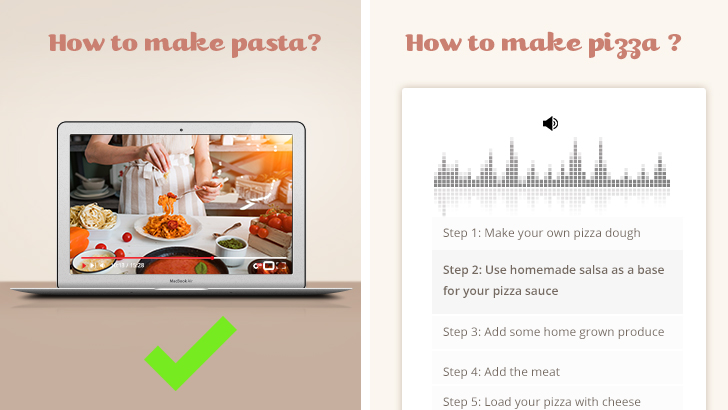Did you know that information is transmitted to your brain 60,000 times faster by visuals than by words?
Video learning has been the talk of the town for over half a decade. Although studies continue to remain mixed for how effective video learning is as a whole compared to traditional methods there are some very observable benefits that are associated with video learning. These benefits can be especially beneficial for people interested in learning about new topics quickly. Today we will look at some of these benefits and decide if video learning may be the right fit for you.
Are You A Visual Learner?
Video learning might be right for you.

Are pictures and graphs your favorite way to take in information? Then you might be a visual learner. Video learning is great for visual learners as it can be found to be more engaging than listening (audio learner) or actually doing through touch (kinesthetic learner).
Videos allow for bite sized pieces of information to be relayed over short periods of time. Videos normally are story structured so that these bite sized pieces relay and emphasize key points. These smaller bits of information that emphasize key points can be readily absorbed and remembered by visual learners, making video a powerful learning tool and strategy for anyone who considers themselves a visual learner.
Didn’t Catch That?
Video can help with that.

One of the great things about video learning is that it is re-watchable. I know what you’re going to say, “So is audio.”, but as I stated above information is transmitted faster through seeing than listening. This means you can re-watch something to gain more information faster compared to re-listening.
I am not saying that audio learning is bad, far from it. Audio learning is perfect for enjoying long form subject matter when your eyes are occupied (for example when driving), but if you need to learn those key points fast the best way is video.
Look how popular learning to cook shows are on YouTube. There is a reason for that. According to elearningindustry.com, we are likely to remember 10% of textual content, 65% of visual content, but 85% of visual content with audio. So if on first viewing you missed that 15% you can simply re-watch and quickly get that 15% lodged in your brain.
Learn From Seeing The Experience
See Demonstrations. Don’t Just Imagine Them.

A great thing about video learning is that even if you do not consider yourself a visual learner you can still get great benefits from using video to learn. Being able to see how a complicated problem is solved and then reexamining the video can allow you to learn how to answer that problem.
Take again the cooking show example from earlier. You might not have any idea how to cook Korean food or the best way to cook it, but if you watch enough videos on how to make Haemul Pajeon (seafood vegetable pancake) you will eventually learn and be cooking like a pro in no time.
Maybe I should have made this a video
Video combined with audio allows for you to take in more information at a quicker pace.
This isn't always the perfect solution for learners and maybe audio books are the way you are most comfortable with, but if you are a visual learner looking into video learning might just be a good way for you to expand your horizon.